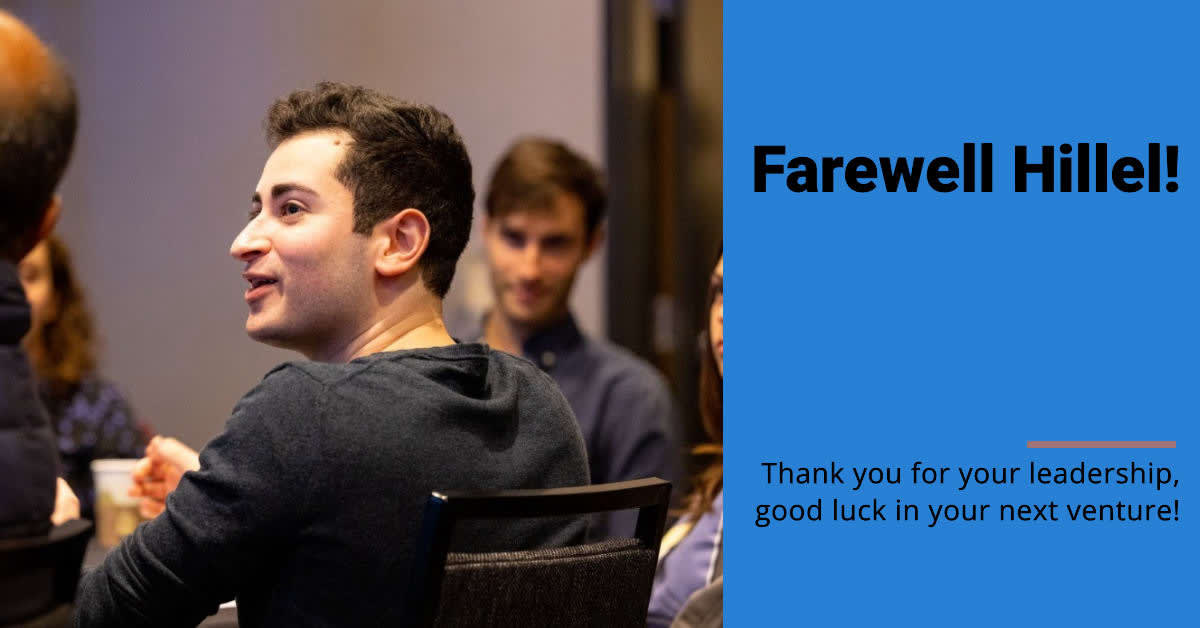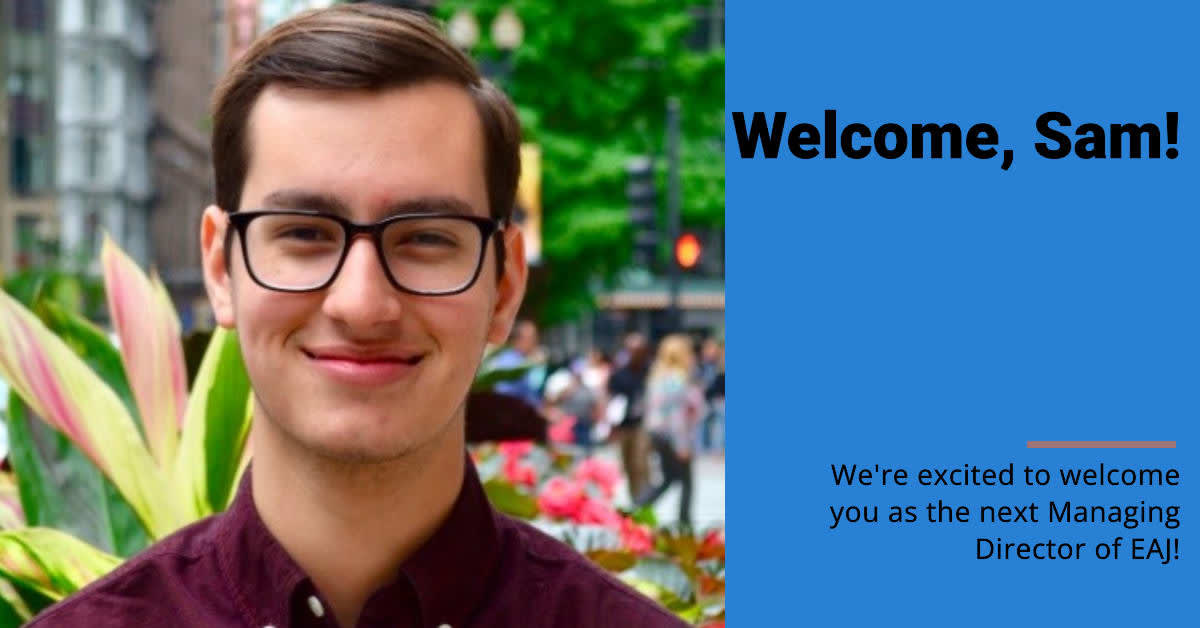The new year brings some big news for EAJ: the departure of our first Managing Director, and an exciting new leader for our organization. Read on for our appreciation of our outgoing MD, Hillel, and to learn more about our incoming MD, Sam, and how you can get involved. Wishing everyone in our community a shana tova, a good year to come - We hope it is filled with personal growth as well as growth in our capacity to do justice in the world!
- A fond farewell to EAJ’s first Managing Director, Hillel
- A warm welcome to EAJ’s new Managing Director, Sam
A Fond Farewell to EAJ’s first Managing Director, Hillel Ehrenreich
Feeling more than a bit verklempt but also full of nachas, we would like to share that our first Managing Director, Hillel, has left EAJ to start his next chapter as a 1L at Harvard Law School.
From the moment Hillel stepped into the role of Managing Director, he's been a true mensch, pouring his heart and soul into growing EAJ from its nascent stages to the thriving community it is today. Under his leadership, we've seen EAJ transform from a disorganized collection of volunteers with little real-world impact into a lean and effective organization that embodies Jewish values of rigorous study and tikkun olam and EA values of truth-seeking and taking concrete steps to help others effectively.
Let's take a moment to kvell about some of Hillel's remarkable achievements. With the help of our volunteers, program participants, board, and the wider EAJ community, Hillel:
- Launched and nurtured our flagship 8-week fellowship program that fostered deeper engagement with Jewish texts and EA concepts among the many participants--a significant portion of whom have made significant career, donation, or other changes after participating.
- Cultivated a robust network, connecting participants with impactful opportunities and resources, leading to significant career changes and increased positive impact.
- Introduced EA principles to new Jewish audiences through engaging Shabbat dinners, thought-provoking talks, and partnerships with Jewish organizations.
- Secured continued funding from EA Infrastructure Fund allowing us to reach hundreds of new people with compelling programming.
Hillel, your dedication to tikkun olam through the lens of EA has been nothing short of inspiring. You've shown us that combining Jewish values with EA principles can create a powerful force for good in the world.
As you depart our scrappy, small, and obscure institution for yet another one--"Harvard Law School" (is it even accredited? Oy vey!)--know that you're leaving EA for Jews with a strong foundation and a community bursting with potential. We have no doubt that you'll bring the same passion, intellect, and chutzpah to your studies that you've brought to our organization, and that you’ll always remember as we read in Ethics of our Fathers, that we study for the sake of action in the world.
To our beloved outgoing Managing Director, we say: Mazel Tov on your next chapter! May you continue to go from strength to strength, and don't forget to call your mother (and us) once in a while.
With gratitude and best wishes,
The EA for Jews Board and Community
PS -- wondering who will take the helm? Read on...
A warm welcome to EAJ’s new Managing Director, Sam Roth
We are pleased to announce that we have selected Sam Roth as the next Managing Director of EAJ!
Sam is an alum of EAJ's intro fellowship program who is excited to bring his talents to help develop and expand the fellowship and other impactful programming. He has a professional background in behavioral science as well as political organizing, particularly in upstart settings.
Sam traces his interest in public affairs back to his Jewish upbringing that stressed values of doing good and social justice, values that naturally sparked an interest in the effective altruism community when he was in college and continuing into his early career. He holds bachelor's and master's degrees in public policy from the University of Chicago, reflecting his commitment to rigorous thinking about the best pathways to social impact. Having served in several capacities as a teacher, tutor, and mentor, Sam is passionate about helping others learn and realize their potential to make an impact, a passion that he looks forward to putting into practice every day working with the fabulous EAJ community.
Originally from Chicago, Sam currently lives in Washington, DC with his partner Samy (yes, it gets confusing…) and their dog Tsunami. Outside of work, he enjoys playing guitar, exploring plant-based cooking, and spending time with family and friends. He also "enjoys" being a tortured fan of the Chicago Bears and New York Mets. He is eager to get to know the EAJ community better and is always happy to discuss EA, Jewish culture, music, sports, or anything else!
Sam is currently wrapping up his prior work and will begin working full time for EAJ a bit after the High Holidays. He is excited to meet our vibrant community and hear your ideas and ways you would like to be involved -- stay tuned for an announcement of his office hour sand in the meantime reach out to him at eaforjews@gmail.com.
The EA for Jews Board



Congrats Hillel, Sam and EAJ! Looking forward to what's next.